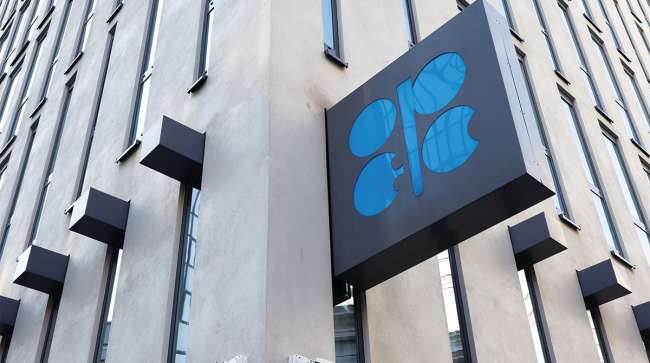OPEC Cuts Global Oil Demand Growth Forecasts Again

[Stay on top of transportation news: Get TTNews in your inbox.]
OPEC cut its oil demand growth forecasts for this year and next for a fourth consecutive month as it belatedly recognized a slowdown in top consumer China.
Global oil consumption will increase by 1.8 million barrels a day — just under 2% — in 2024, the Organization of Petroleum Exporting Countries in a monthly report. That’s 107,000 barrels a day less than previously forecast after data from across Asian nations like China and India, as well Africa, arrived below expectations, it said.
OPEC has scaled back this year’s demand growth projections by almost a fifth since July, in keeping with a sharp retreat in crude prices. Yet the cartel’s outlook remains significantly more bullish than other forecasters — from Wall Street banks and trading houses, and even Saudi Arabia’s oil company, Aramco. It’s roughly double the rate anticipated by the International Energy Agency.
The group’s members have shown a lack of confidence in the Vienna-based secretariat’s forecasts. Led by Saudi Arabia, OPEC and its allies have twice delayed the restart of production halted since 2022. A series of modest monthly increases is due to start early next year — pushed back from October — and will be reviewed at a meeting on Dec. 1.
OPEC Secretariat held the 10th Technical Meeting on Asian Energy and Oil Outlook today. During the meeting, experts discussed medium- to long-term outlooks for global energy markets with focus on Asia, as well as potential solutions to climate challenge, including CCS, CCUS,… pic.twitter.com/LtkQhxWrqX — OPEC (@OPECSecretariat) November 11, 2024
International crude futures have declined roughly 18% since early July, trading near $72 a barrel in London, as traders grow increasingly confident that conflict in the Middle East won’t disrupt the region’s exports. Instead, they’ve focused on a slowdown in China, where demand contracted several months in a row as Beijing grapples with an array of economic challenges.
The outlook may be shaken by the return next year of President-elect Donald Trump, who has threatened to impose severe trade tariffs on China and other countries. During his previous term, Trump choked oil exports from OPEC member Iran in a dispute over Tehran’s nuclear program, and often scolded the cartel for keeping prices high.
In the meantime, OPEC+’s leadership may take consolation from the improving performance of some members that have lagged in implementing their output cutbacks.
Kazakhstan reduced production by 292,000 barrels a day to 1.29 million a day in October, according to the report. That’s below its quota, meaning the country has made a start on the additional curbs it pledged as compensation for previous overproduction. The reduction may simply reflect temporary maintenance at the nation’s giant Kashagan oil field.
Want more news? Listen to today's daily briefing above or go here for more info
Iraq is also gradually falling in line with the quota agreed at the start of year, while still pumping above it and showing no sign of compensating for previous cheating. It reduced daily output by 66,000 barrels to 4.068 million barrels in October, still a bit higher than its target of 4 million barrels. Russia remained a little above its agreed ceiling, the report showed.
OPEC predicts that world oil consumption will average 104 million barrels a day this year. Daily demand will increase by a further 1.5 million barrels in 2025, or 103,000 barrels less than the organization previously forecast.
OPEC’s rival institution, the Paris-based IEA, will release its latest monthly assessment of global oil markets on Nov. 14. It has predicted that demand growth will slow as the world shifts away from fossil fuels toward electric vehicles, in a bid to avert disastrous climate change.




